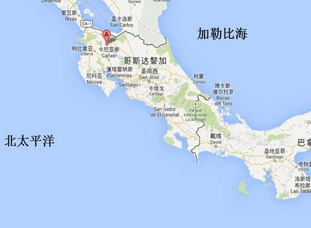Project recommendation
Contact us
tel:027-87580888
phone:18971233215
fax:027-87580883
email:didareneng@163.com
address: Inside the China University of Geosciences, 388 Lumo Road, Hongshan District, Wuhan (Wuhan)
 industry news
industry news Model of a hydrothermal geothermal resource
There appear to be five features that are essential to malting a hydrothermal (i.e., hot water) geothermal resource commercially viable. They are:
1 A large heat source
2 A permeable reservoir
3 A supply of water
4 An overlying layer of impervious roclt
5 A reliable recharge mechanism.
A highly schematic depiction of such a system is shown in Fig. 1.4, first presented by D.E. White.
Cold recharge water is seen arriving as rain (point A) and percolating through faults and fractures deep into the formation where it comes in contact with heated roclts. The permeable layer offers a path of lower resistance (point B) and as the liquid heats it becomes less dense and tends to rise within the formation. If it encounters a major fault (point C) it will ascend toward the surface, losing pressure as it rises until it reaches the boiling point for its temperature (point D). There it flashes into steam which emerges as a fumarole, a hot spring, a mud pot, or a steam-heated pool (point E). The boiling curve is the locus of saturation temperatures that correspond to the local fluid hydrostatic pressure. We will have more to say about this in Chapter 4.
The intent of a geothermal development project is to locate such systems and produce them by means of strategically drilled wells. As might be presumed, most (but not all) hydrothermal systems give away their general location through surface thermal manifestations such as the ones described above.

If any one of the five features listed as needed for a viable hydrothermal resource is lacking, the field generally will not be worth exploiting. For example, without a large heat source geofiuid temperatures will be relatively low, i.e., the thermal energy of the system will be insufficient to support exploitation long enough to make it economic. Without sufficient permeability in the formation, the fluid will not be able to move readily through it, i.e., it will not be able to remove much of the stored thermal energy in the rock. Furthermore, low permeability will cause poor well flow or, even worse, may prevent any production from the reservoir. Without fluid in the system there is no heat transfer medium and the thermal energy of the formation will remain in the reservoir. Without an impermeable cap rock, the geofiuids will easily escape to the surface appearing as numerous thermal manifestations and the pressure in the formation will quickly dissipate. And lastly, without a reliable and ample recharge to the reservoir, the geofiuid will eventually become depleted when it supplies a power plant.
With the exception of requirements (a) and (d), deficiencies in the others have been addressed through research and field practice. Insufficient permeability can sometimes be remedied by artificial means such as hydraulic fracturing (called "hydrofraclcing") in which high-pressure liquid is injected from the surface through wells to open fractures by means of stress cracking. However, unless the newly created widened fractures are held open with "proppants" they will re-close when the injection ceases. If little water is present in the formation or recharge is meager, all unused geofiuid from the plant can be reinjected. Furthermore, external fluids can be brought to the site by some means and injected into the formation. In Chapter 12 we discuss such a process
Fiq. 1.5 Ideal hot Dry Rock production scheme
at The Geysers field in Northern California in the United States in which treated municipal waste water from nearby communities is sent to the field via pipeline to assist in the maintenance of an inventory of fluid in the reservoir.










